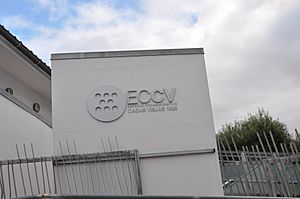Casas Viejas incident facts for kids
The Casas Viejas incident, also known as the Casas Viejas massacre, happened in 1933. It took place in the small village of Casas Viejas in the Cádiz Province of Andalusia, Spain. This event was a sad moment in Spanish history.
Contents
What Happened in Casas Viejas?
Why Did It Happen?
In the late 1800s and early 1900s, a movement called anarchism grew in Spain. Anarchists believed that people should live without a strong government or powerful bosses. They followed ideas from thinkers like Mikhail Bakunin. They wanted workers to unite and fight against unfair landowners and the government.
This idea became very popular among farm workers in Andalusia. These workers had been treated unfairly for a long time. Many joined groups like the Confederación Nacional del Trabajo (CNT) or the more radical Federación Anarquista Ibérica (FAI). These groups helped them get better pay and working conditions. However, the Spanish government, which had become a republic in 1931, did not like the anarchist movement.
The Tragic Events
In January 1933, workers from the CNT marched in the streets. They believed they were starting a big change for the country. During these protests, two guards were hurt. The government wanted to stop these strong protests. This led to a very sad event on January 11–12, 1933.
Police forces, including the Civil Guard and Assault Guard, arrived in Casas Viejas on January 11. Many villagers ran away. But some anarchists tried to fight back. They hid inside the home of an anarchist named Francisco Cruz Gutiérrez, who was called Seisdedos (meaning "Six fingers").
When the guards, led by Captain Rojas, arrived, they set the house on fire. Sadly, the anarchists and their families were still inside. One anarchist, Maria Silva Cruz, managed to escape the fire with a child. After this, soldiers and police arrested anyone in the village who had a gun. They took these people to the burned house. There, they killed them. In total, twenty-four people died during this incident.
What Was the Impact?
The tragic events in Casas Viejas shocked the whole country. It made the revolutionary groups, who wanted big changes, weaker. People argued a lot about whether the President of the Second Spanish Republic, Niceto Alcalá-Zamora, had ordered the killings. This was never proven. However, many believe it played a part in him losing the next election. Even the Socialists, who had supported the new government, started to withdraw their support for the republic.
See also
 In Spanish: Sucesos de Casas Viejas para niños
In Spanish: Sucesos de Casas Viejas para niños


